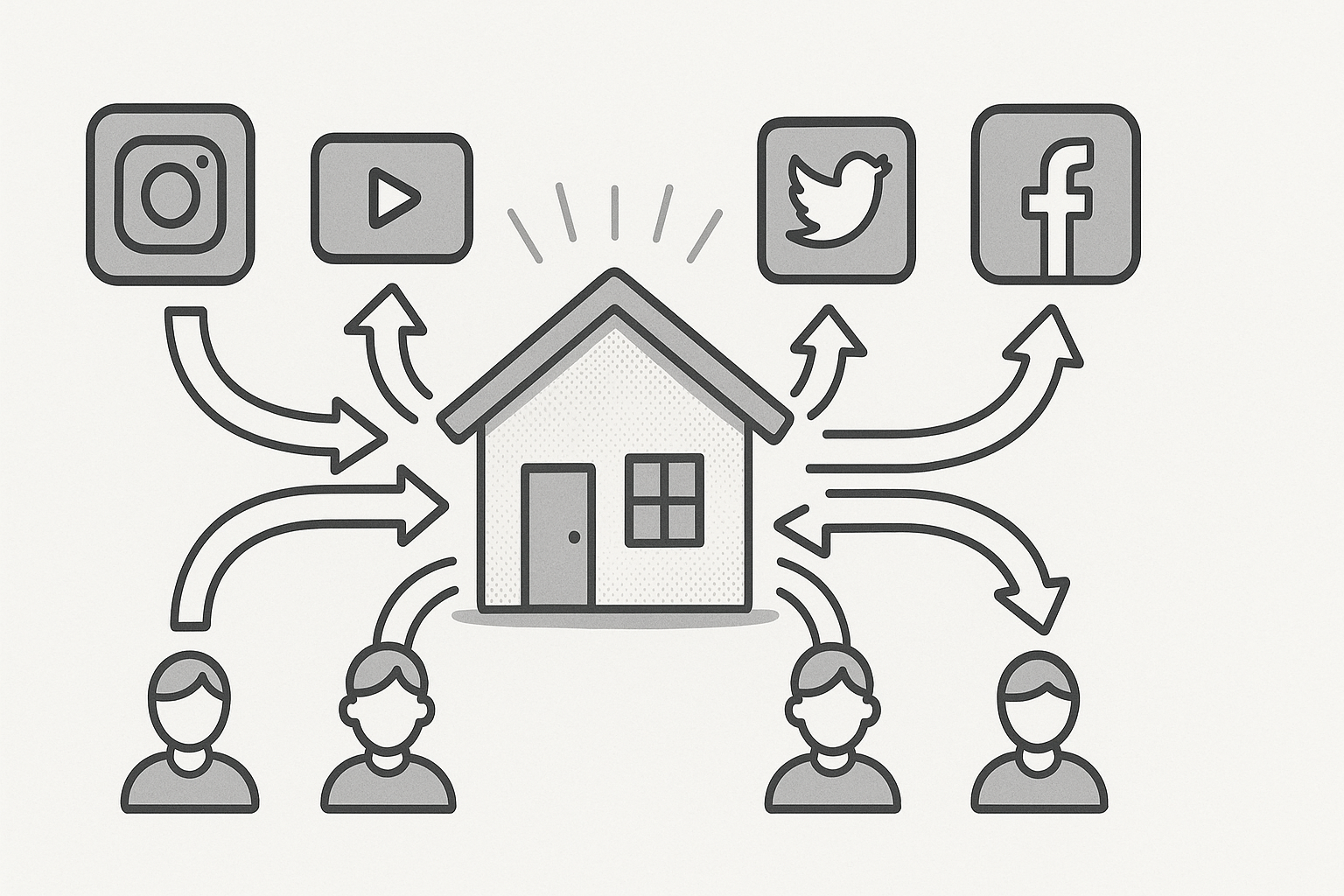Turn Medium Into Your Traffic Engine

Many creators make a fatal mistake with Medium: they treat it like their home base.
They publish exclusively on Medium, build their entire audience there, and wonder why they feel trapped when the algorithm changes or their account gets suspended.
Here's a better approach: use Medium as a traffic driver for your own site, not a replacement for it.
The POSSE method makes this possible. Post on your Own Site, Syndicate Everywhere.
It's how you can have your cake and eat it too.
Why POSSE Matters for Creators
You've probably heard the "rented land" warning about social platforms. Medium falls into this category. No matter how much you love it, you don't control it.
But Medium has something most platforms don't: built-in SEO juice and a hungry audience looking for good content. Ignoring that reach because of platform risk is just as stupid as depending on it entirely.
POSSE lets you capture Medium's benefits without the drawbacks. You publish on your site first (where you own everything), then syndicate to Medium (where people can discover you).
The magic happens with canonical links.
What Canonical Links Actually Do
Think of canonical links as forwarding addresses for search engines.
When you publish the same content on multiple sites, search engines get confused. Which version should rank in results? Without canonical links, they might pick Medium's version over yours, sending all that traffic to Medium instead of your site.
Canonical links solve this by saying "Hey Google, this is the same content, but this is the original source." They point search engines to your site as the authoritative version.
Medium respects these links. When you set a canonical URL pointing to your site, you get the best of both worlds:
- Your site gets the SEO credit
- Medium's audience discovers your work
- You build domain authority for your own platform
- You're not dependent on any single platform
How to Set Up POSSE with Medium
Here's the step-by-step process:
Step 1: Publish on Your Site First
Always start with your own platform. Whether it's WordPress, Ghost, or a simple static site, publish your content there first. This establishes it as the original source.
Copy the full URL of your published post. You'll need this for the canonical link.
Step 2: Create Your Medium Post
Paste your content into Medium's editor. Format it however you like. Add images, adjust headings, make it look good for Medium's audience.
Don't publish yet.
Step 3: Set the Canonical Link
Before publishing, click the three little dots next to publish in Medium's editor to access story settings. You'll see "More Settings" at the bottom. Click that, hen scroll down to "Advanced Settings."
In the canonical link field, paste the URL from your original post. This tells Medium (and search engines) where the content originally came from.
Step 4: Publish and Monitor
Hit publish. Your content now lives in both places, but search engines know your site is the source.
Check your analytics after a few weeks. You should see referral traffic from Medium to your site, plus improved search rankings for your original post.
The Benefits Stack Up
This approach gives you multiple advantages:
SEO boost: Your domain gets credit for popular content, building authority over time.
Traffic diversification: Readers discover you on Medium but land on your site for more content.
Audience ownership: People who like your Medium posts can subscribe to your newsletter or follow your blog directly.
Platform insurance: If Medium changes or your account has issues, your content and SEO value stay with you.
Common Mistakes to Avoid
Publishing on Medium first: Always start with your own site. Canonical links should point from Medium to your site, not the reverse.
Forgetting the canonical link: If you skip this step, Medium's version might outrank yours in search results.
Changing content between versions: Keep them identical. Search engines penalize duplicate content that's been modified.
Not customizing for Medium's audience: While the content should be the same, you can adjust formatting and presentation for Medium's reading experience.
Beyond Medium
This same approach works with LinkedIn articles, dev.to, and other platforms that support canonical links. You're building a content distribution network with your site at the center.
Each platform becomes a discovery channel that funnels people back to your owned platform. That's how you build a sustainable creator business without platform dependency.
Getting Started
Pick your next piece of content. Publish it on your site first, then syndicate to Medium with a proper canonical link.
Watch your analytics. You'll see the traffic flow from Medium back to your site, plus gradual improvements in your site's search rankings.
That's POSSE working exactly as intended. Your content works harder, reaches more people, and builds value for the platform you actually control.
Thanks for reading!
Hi, I'm Joe. I help creators share their unique voices simply and effectively. Here's how I can help you:
◦ One email, Monday thru Friday
◦ Learn in less than a minute
◦ Simple. Repeatable. Human.
Minimal Inbox, Maximum Value. Niche of One.
Member discussion